Charger Klarus CH4s
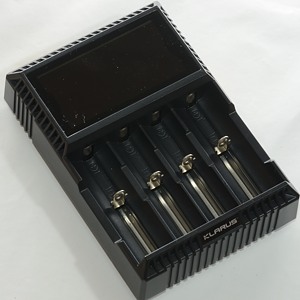
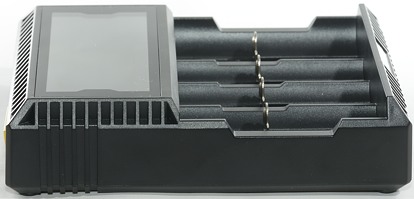
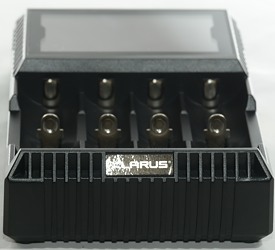
Klarus is mostly known for their flashlights, but they do also sell some chargers. Here I am looking at a 4 channel universal charger that shows how much capacity that is charged into the batteries.
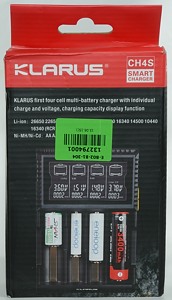

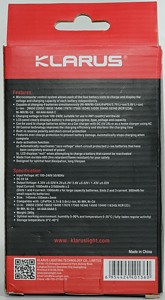

I got the charger in a retail box from a gearbest.
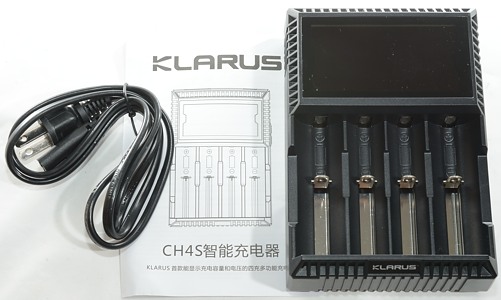
The box contained the charger, a mains cable and a instruction sheet.
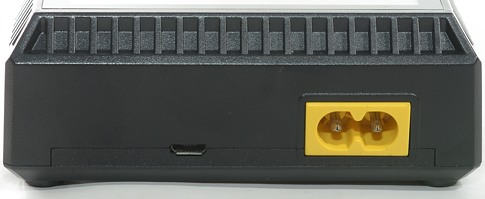
The charger has both a mains power input socket and a micro usb power input socket.
During my test the micro usb socket broke loose.
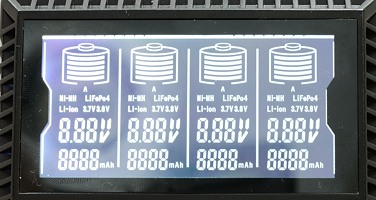
During power on the charger will show all segments on the display.
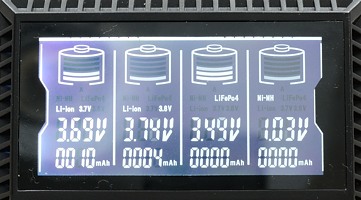
Here I have loaded the charger with some batteries, the charger will automatic select NiMH/LiIon chemistry, but LiFePo4/3.7V/3.8V must be selected manually with the mode button. Default is 4.2 volt LiIon (3.7V on display).
The mAh display shows how many mAh is charged into the battery.
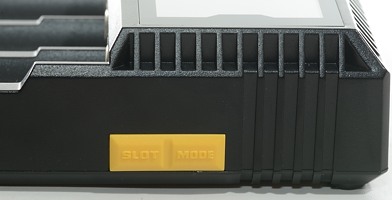
There is two buttons, one to select battery chemistry (MODE) and one to select slot.
When the charger is loaded with batteries the MODE button will select chemistry for all batteries at once. To select chemistry for individual batteries press the SLOT button (Very good functionality).
When the charger starts charging the selection is locked for that battery, to change it the battery must be removed and inserted again.
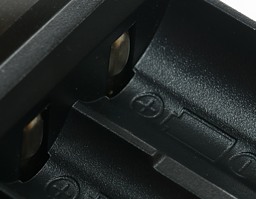
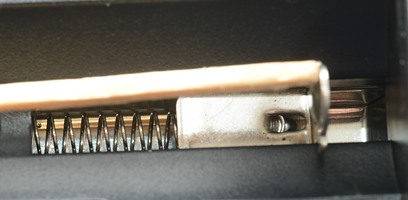
The charge uses the typical slider construction with a metal rail and it works very well from about 30mm to 71mm, i.e. the charger can handle just about any protected 18650 and 26650 cell.


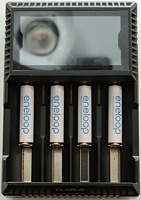
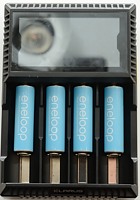
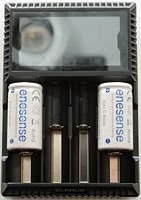
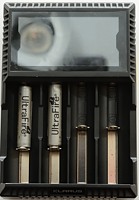
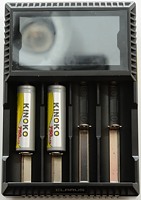
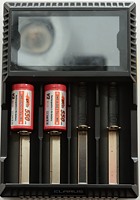
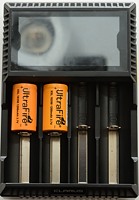
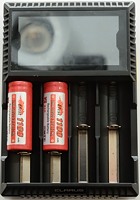
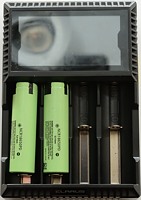
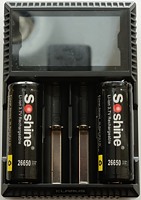
The charger can handle 71 mm long batteries, including flat top cells.
The minimum charge current is 0.5A, this is on the high side for 10440 cells.
Measurements
- Power consumption when idle is 0.56 watt, it drops to 0.38 watt when the display reduces brightness.
- The display will reduce brightness after two minutes without any button presses.
- When only using slot #1 and #4 the charge current is 1A
- When using slot #2 or #3 the charge current for all slots will drop to 0.5A
- Current will change between 0.5A and 1A as batteries are inserted and removed.
- A full cell in slot #2 or #3 will still reduce current in slot #1 and #4
- Mode button is used to select LiIon chemistry
- Slot button is used to select slot when selecting chemistry.
- Charger will start charging from about 0V
- Above 2.0 volt the charger assumes LiIon batteries.
- From about 1 volt the voltmeter will be precise (Within +/-0.03 volt).
- When the battery is full the voltmeter will stop updating.
- The charger will not restart if battery voltage drops.
- Charge will restart charging after power loss, or battery insertion.
- When not connected to power it will drain about 2.2mA from a LiIon and 0.7mA from a NiMH battery.
Charging LiIon 4.2V
%20%231.png)
This is a nice CC/CV charge curve with 100mA termination.
Display shows 2924mAh
%20%232.png)
The second slot only charges with 0.5A and uses the same 100mA termination. The lower charge current will make it slower, but also useful for smaller batteries.
Display shows 2816mAh
%20%233.png)
%20%234.png)
The two last slots looks like the two first.
Display shows 2757mAh and 2880mAh
%20%231.png)
%20%231.png)
2600 and 3400mAh cells also looks fine.
Display shows 2578mAh and 3120mAh
%20%231.png)
This older 2600mAh cell do not look as perfect, the voltage is a bit high during the charge and the termination is a bit early. This is nothing serious, but could be better.
Display shows 2297mAh
%20%232.png)
Another old cell, again the charger curve is imperfect.
Display shows 611mAh
%20%232.png)
This cell is newer and the charge curve looks much better.
Display shows 717mAh
.png)
Using the usb power input was rather slow. The problem is voltage drop in the cables, this charger needs 5V or a bit more.
.png)
Increasing my power supply to 5.2 volt did help, but I did not reach full charge speed. It do even reduce charge rate when battery voltage increase and the charger needs more power.
Display shows 2916mAh, 2883mAh, 2872mAh, 2644mAh
.png)
Using mains voltage is much better, but current is a bit lower than for a single cell.
Display shows 3057mAh, 3021mAh, 3086mAh, 2946mAh
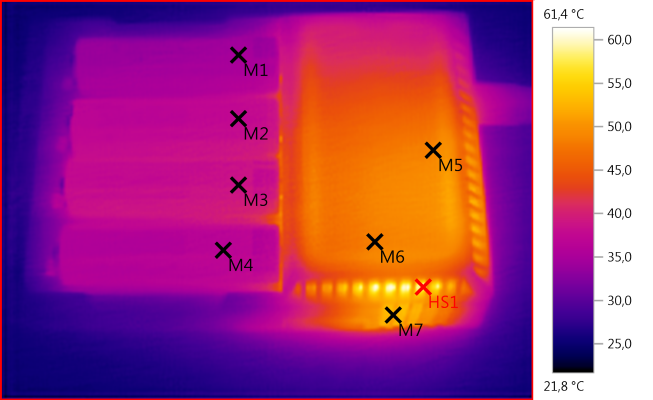
M1: 34,8°C, M2: 37,6°C, M3: 38,6°C, M4: 36,6°C, M5: 49,0°C, M6: 48,5°C, M7: 51,4°C, HS1: 61,4°C
Batteries are not heated much during charge.
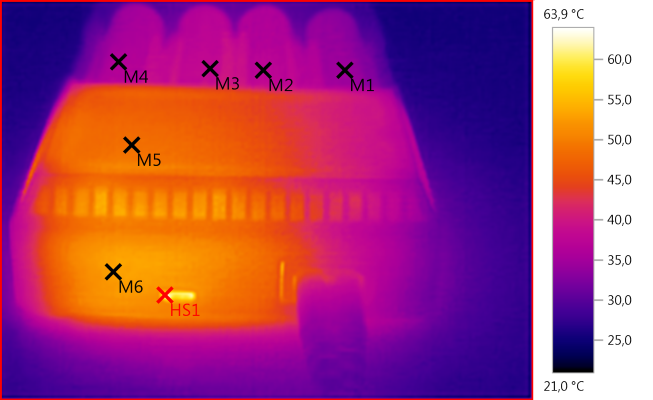
M1: 34,7°C, M2: 37,5°C, M3: 38,2°C, M4: 36,4°C, M5: 48,6°C, M6: 52,8°C, HS1: 63,9°C
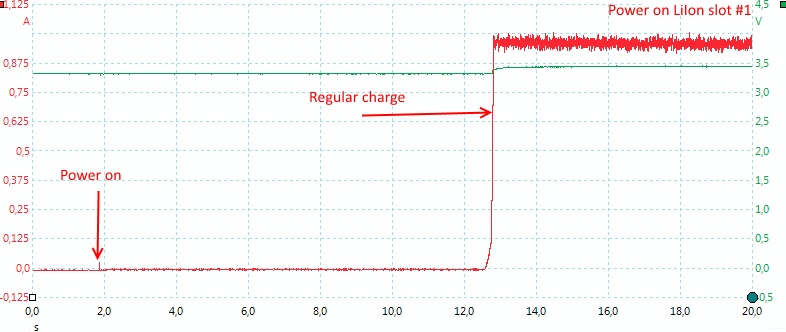
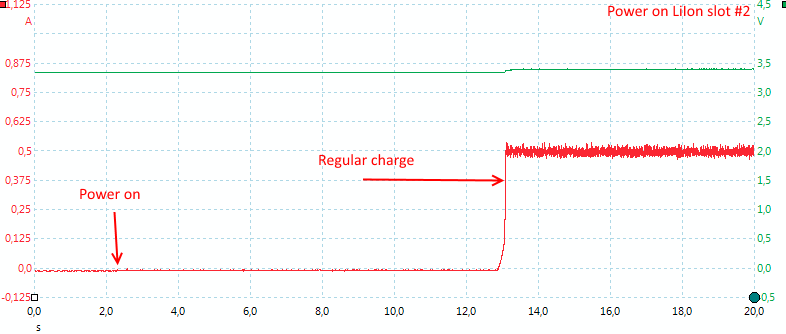
The charger is fairly slow to start because it waits for user input.
Charging LiIon 3.6V (LiFePo4)
%20%231.png)
A good LiFePo4 charging.
Display shows 1190mAh
Charging LiIon 4.35V
%20%231.png)
Charging NiMH
%20%231.png)
This looks like a nice -dv/dt charging.
Display shows 1654, this is significantly lower than my curve shows.
%20%232.png)
With the lower charge current the -dv/dt charging can be slower to terminate.
Display shows 1753
%20%233.png)
This time it terminated perfectly.
Display shows 1517
%20%234.png)
The last channel did also terminate perfectly.
Display shows 1774
%20%231.png)
%20%231.png)
Higher capacity with 1A charge current, the termination works perfectly.
Display shows 2239 and 2169
%20%232.png)
It looks like the charger stops slightly premature on this AAA cell.
Display shows 502
%20%231.png)
%20%232.png)
Detecting a full cell depends on charge current, it is faster with 1A than with 0.5A
.png)
NiMH needs less power and less voltage than LiIon, but it is not possible to see the charge current on the above chart.
a.png)
Same as above, put with the input current removed. The charge current is about 0.5A for all four batteries, there are no problems with voltage drop from the usb power supply.
Display shows 2093, 1955, 1787,2713 (Oops, the last one did not terminate).
.png)
There is not much difference between mains power and usb power when charging NiMH.
When a cell is finished there is a bit more current to the other cells.

M1: 34,4°C, M2: 35,7°C, M3: 35,8°C, M4: 34,7°C, M5: 39,9°C, M6: 38,9°C, M7: 43,8°C, HS1: 50,4°C
The batteries are not heated much during charge.
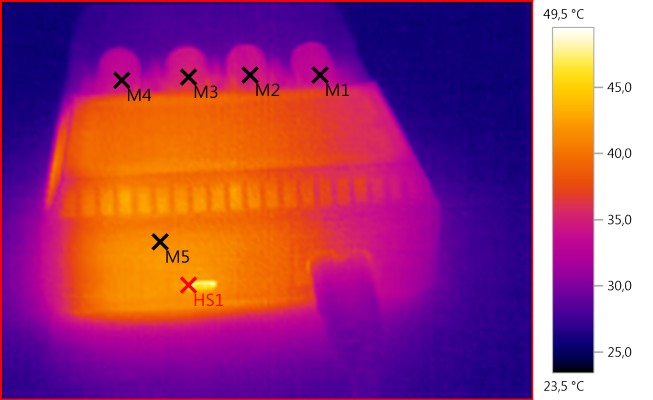
M1: 33,7°C, M2: 34,8°C, M3: 35,5°C, M4: 34,0°C, M5: 41,9°C, HS1: 49,5°C
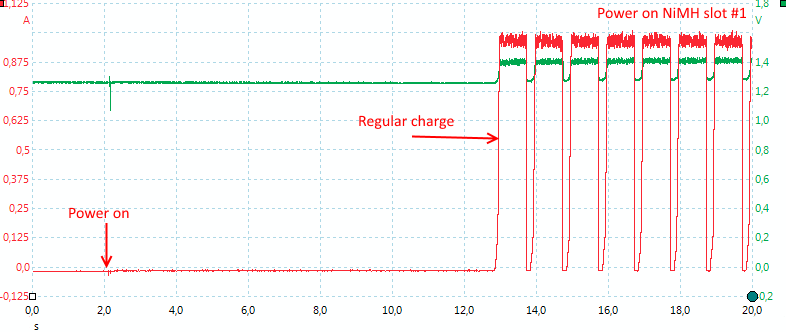
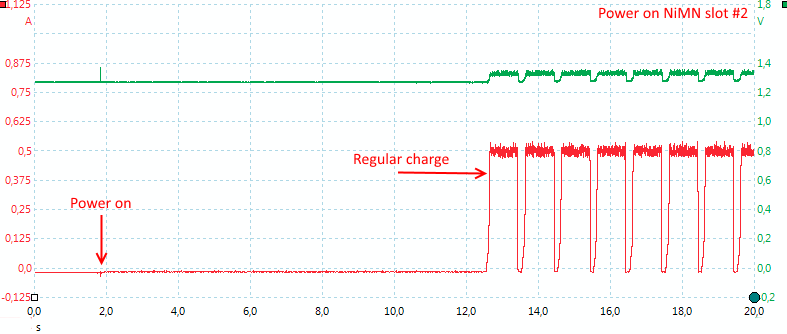
The charger is fairly slow to start because it waits for user input.
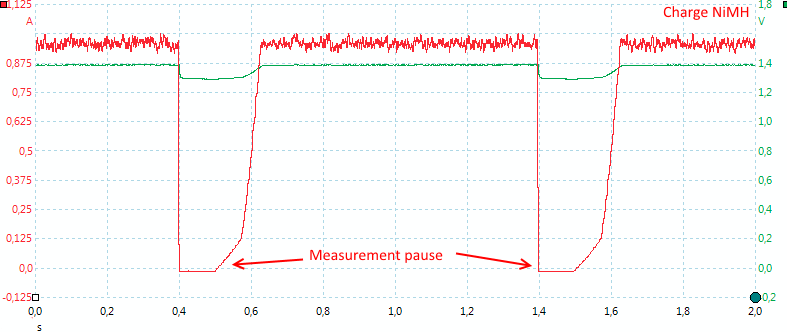
With NiMH the charger stops at regular intervals to measure voltage.
Testing the mains transformer with 2500 volt and 5000 volt between mains and low volt side, did not show any safety problems.
Conclusion
When the charger is turned off it looks like something I have seen before, but display and functions are significantly different.
I like the capacity display, but it is on the low side for NiMH.
The support for 3 different LiIon types is also very nice and the selection function is good to use.
LiIon has a good charge curve, except on old cells.
NiMH works fine at 1A, but need better termination on 0.5A, I am a bit worried it might miss termination on some cell when using 0.5A.
There is a lot to like about this charger, but due to the above issues, it is just below what I will call good, i.e. acceptable.
Notes
The charger was supplied by Gearbest for a review.
Here is an explanation on how I did the above charge curves: How do I test a charger